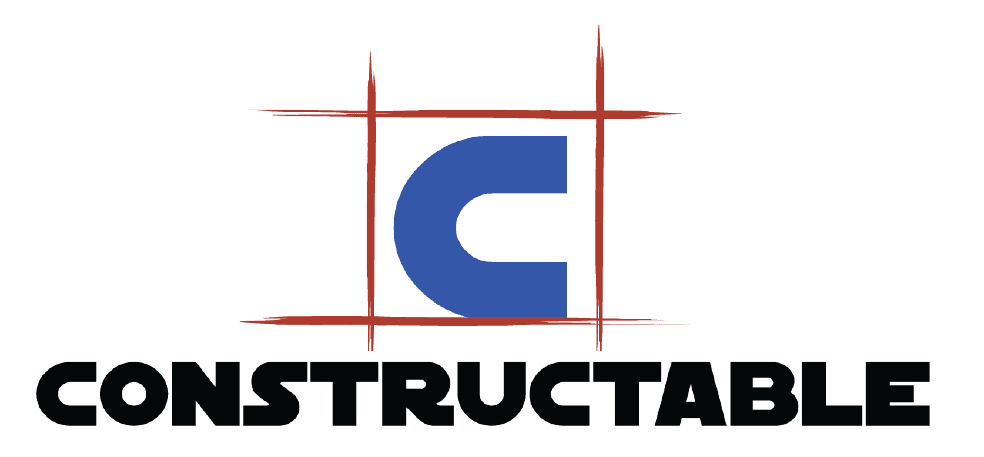
Negotiating Like a Pro Part 2
In our last article, we covered the internal preparations needed to contract like a pro. They were knowing 1. Yourself, 2. Your resources, 3. Your expectations, 4. Your stakeholders, and 5. Your limitations.
Doing the important, internal spadework of setting expectations, boundaries, goals, and dreaming a little will have you richly prepared for external negotiations.
In the last post we asked the question, “How do you keep up with all the necessities of contractual legalese, in-house counsel on the other side, rising costs, hard-nosed negotiation, timelines, scoping, keeping the customer happy, informing stakeholders, and all the other various hats that a construction management professional has to wear to succeed in business?”
Now it is time to put these things to work for you as you negotiate like a pro externally. You don’t have to know all the various skills needed and multiplying competencies. You simply need to come prepared with 5 fundamental parts of the contractual process.
Contracting like a pro means that you have to do these things externally:
1. Present a united front
2. Over-prepare
3. Get what you need while you can
4. Use your leverage wisely, sparingly
5. Know yourself
“Negotiation is key, with people engaging in it with varying results; but to be incredible at it you simply have to keep your needs at the forefront. It is our job to get you what you need; and we’ll go to whatever lengths to get it for you.” —Jared Hellums, Principal, Constructable
TIP 1: BRING A UNITED FRONT.
Bring your stakeholders to the bargaining table; have your stats ready; prepare your other, competing quotes. Most people do these things very easily, naturally. However, they do not prepare the team to present a united front. This can sink you as quickly as any lack of preparation.
Team members, glibly trying to make an impression, appear hard-nosed, or for whatever other reason, can set back the ground you’ve covered by not being unified with your underlying principles, goals, and methods. In one instance, one team member gave away the farm by being too friendly in negotiation; another spoiled the deal by letting slip how bad our current vendor was; one simply blabbed for too long, giving all of the leverage to the vendor. Even not informing your team what you are going after can sink the ship. It is always best to have one voice making the monetary negotiations and everyone else pitching in to support that cause.
Present the united front. This is only getting you to ground zero, your foot in the door. Negotiation is just like in football: you cannot win the game in the first quarter, but you certainly can lose it.
TIP 2: OVER-PREPARE
How do you seal a great deal for yourself when your potential vendor is using a team member that is solely dedicated to negotiation? Their entire job is to negotiate well and close the deal. You, on the other hand, have to manage your payroll, inspire your team, set budgets, find multiple vendors, set the tone for the organization, respond to email, put out fires, discipline your under-performing workers, make up for the superintendent who missed a shift, grant sick leave, and negotiate a stunning deal. Furthermore, you know that the other side has collaborated with higher ups, strategized in depth, referenced their best material, taken copious notes on what you’ve told them, called in backup, and has been trained in the latest negotiation seminar. How can one overcome such preparations?
Over-prepare.
There is no substitute to being over-prepared. To quote a common truism: If you have failed to prepare for the negotiation, you have prepared the negotiation to fail. In the vein of helping you to be over-prepared, here are a few practical tips:
- What are your financials?
- What is your bottom dollar goal?
- What is your top dollar concession?
- What is your goal?
- What is non-negotiable vs. what can fall by the wayside?
- How much do you value this proposition? (See our blog on Cost, Price, and Value for more on this by clicking HERE.)
- What are your margins?
- Can you afford to give away parts of the contract as a concession?
- Can you afford not to win this negotiation?
- Do you have multiple quotes? (I.e. Have you shopped around?)
- Is there a fallback if this negotiation fails?
- What are your stakeholders expecting?
- Have you done market value research?
- Who is affected by delays?
- Who is affected by price increase?
- Do you have enough cashflow to be able to get started? To delay?
- How long until this project is needed? Is there a workaround?
- Will I have to continually support this project?
- Who is on the other side?
- Who is on my side?
- Is there something hidden that I’m not seeing?
- Is everyone on my side really on my side?
- How can I get the most amount of people the biggest win?
- What do I have to walk away with?
- Am I over-prepared to do this?
Work through a few dry runs with a trusted team member to see if you have prepared well enough. Their insight and you having been questioned harshly before “going live” will enable you to see the cracks that have not been over-prepared. It is at these weak spots that the other side will attack and exploit.
TIP 3: GET WHAT YOU NEED WHILE YOU CAN.
In weddings there is a point of no return for anyone in the crowd, the “speak now or forever hold your peace” part of the ceremony. It has fallen in disfavor recently with very little use in the new traditional ceremony (perhaps because of the harm it has caused?).
Nearly every modern couple abandons this part in favor of lovely vows with little time to stop and ponder what anyone else thinks about the new union. But let us not forget the principle behind this ancient practice (as it is exceedingly helpful in negotiation): while you have not closed the deal, be sure to get all your questions answered and all that you need as a part of the agreed upon service level.
It is vital that you hold a “speak now or forever hold your peace” moment in the negotiations to pause and consider if you truly have gotten where you need to go. Now is not the time for shyness or holding things back that need to be said later. Truly, better to be left at the altar than to endure a messy divorce because of “Tom from the yoga studio” or “my old flame Kim that I ran into the other day” with kids to feed and an upside down mortgage to manage. We are talking metaphorically here, but the idea seems fitting: you do not want to go into a marriage… err… contractual agreement without discussing everything and making decisions on that “everything.”
Additionally, this is the part of the negotiation when you can truly get whatever else you want. There is always a phase where both parties tire of fighting and just want the agreement to be signed. Don’t lose gas at this point. (You can rest later.) When both sides weary, then is the time to strike. This is when the iron is hot.
What could you get by capitalizing on the opportunity to say “speak now or forever hold your peace”?
- “Throw in that SLA you’ve been alluding to; I have not forgotten about it; and you will not pull a bait and switch on me.”
- “I know you said no earlier, but now that we are nearly done, I want to see real movement on ____ because we are so close.”
- “Let us not forget about ____ from earlier. We did not actually come to terms on it.”
- “I don’t feel comfortable closing this out without ____.”
- “You got ____; it’s time for us to get ____.”
- “We’re going to be in this for a long time; we need to make sure that ____ is sewn up and appreciated by all parties.”
Now is not the time to be weary. Push through the grinding portion of the negotiation and you’ll find you’ve gained some additional wins for your company, clout in your team’s mind, and respect at the bargaining table.
TIP 4: USE YOUR LEVERAGE WISELY, SPARINGLY.
The customer always has leverage: he or she is the one spending the money. The negotiation partner has to think, “Am I able to stay in business if I don’t get this sale,” and “Are my commissions high enough to provide for my family if I don’t close out this sale?” Don’t ever let the negotiation partner know they have leverage on you.
Here are a few things that fully leveraged customers say, and say effectively:
- “Yes, your software/service/product is great, but–like my wife when we got married–there are other options here.”
- “We are going to be in this for the long haul; it’s time for you to convince me.”
- “That part of the contract… let’s take it out.”
- “I do not agree to your payment terms.”
- “My boss will not like this.” “My boss requires _____ to happen or no deal.”
- And, perhaps, the most blunt way: “I could walk away if need be.”
Yes, use your leverage, but use it wisely, sparingly so as not to overplay your hand and to avoid looking like someone simply deal shopping. Is there a real reason you are meeting with this vendor? Then let it be known. Let it be known that you are a serious customer; but never over-use your leverage for fear of appearing manipulative and–counterintuitively–losing that leverage. If you overuse it, then everyone at that negotiation table will not take you seriously.
In the beloved NBC TV show, The Office, one character, Kelly Kapoor–never-taken-seriously character–volunteers that no one texts her back unless she makes it seem like an emergency. In other places she threatens violence in order to get her flake of a boyfriend to call her back. Here is someone using her leverage too much. How many times have you seen this at negotiation tables? At this point you become a joke of a character with no real weight to what you say.
But you, conversely, can use your leverage effectively if you use it sparingly. The vendor is trying to get your business; good, you hold all the cards. And now there are only two ways to lose:
1. You’ll win as long as you don’t blurt out the ones you have. This is the mistake of not being prepared.
2. You’ll win as long as you don’t bluff constantly. This is the mistake of overusing your leverage.
“At Constructable we will do the procurement, management, and negotiations for you. We simply need your help in procuring the jobs in question. Let us be your agent for negotiation and getting the job done.” —Jared Hellums, Principal, Constructable
TIP 5: KNOW YOURSELF.
In the previous 4 tips , we have spoken about not losing in quarters 1-3 of the football game. But when you enter quarter 4–provided that you have performed appropriately in quarters 1-3–that is where you can do both: lose and win. Now is the time to step up to take over and win the contract. The way to do this is to know what you have and what you do not.
The questions from tip 2, over-prepare, will aid you in this final phase: what are your stats? Is this negotiation essential? What can you give up? What are your price points? Are there other options for yourself?
Bringing solid answers to the negotiation about these things will illuminate just how hard you can push someone to get your way.
The easiest example is this: “I have three quotes that are very close when compared to each other; I’ll simply choose the best price.”
You can do this because you know what you have in hand: the various prices are your reward for shopping around.
Another example: “This is a non-essential, a ‘best case scenario’, but not a dealbreaker. I do not have to come to terms today. I have the luxury of waiting you out.”
Always ask these over-preparation questions to give yourself real action in the negotiation. If you have not done that, then there is no need to ask them and you will have missed out on the point entirely. What we learn we learn to implement. That is the only way you can weave these various threads into a usable whole.
CONCLUSION: HOW DO YOU CONTRACT LIKE A PRO?
How do you contract like a pro? It takes the honest internal sounding and soul searching and the skillfully-applied tools you just learned here that combine to win the day for you. With these tools you will play hard in quarters 1-3 so that you can win in quarter 4.
Here at Constructable: We are an end-to-end engineering, procurement, and construction management firm, committed to high quality work on time and on budget. Let us take the negotiations–something we specialize at–into our locker room and get you what you need. We need your creative input, your pricing and costs, and your timeline and we can take it from there. That is because we are a design build firm, equipped to take the hustle and bustle of the industry on ourselves so you can enjoy a smooth and care free engagement. Check us out at Constructable.pro to start a free estimate.
ACTION POINT: (With each article we will present one action point as a measurable takeaway for any owner or executive sponsor.)
Engage in negotiation happily, preparedly.
The above points will help you do just this. Let us know your thoughts and results when you use these tips for future negotiations.





